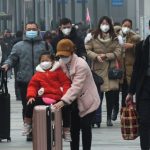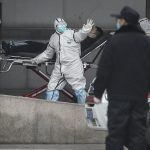An outbreak of a never-before-seen coronavirus continued to dramatically escalate in China this week, with case counts reaching into the 800s and 26 deaths reported by Chinese health officials.
To try to curb the spread of disease, China has issued travel restrictions in the central city of Wuhan, where the outbreak erupted late last month, as well as many nearby cities, including Huanggang, Ezhou, Zhijiang, and Chibi. Hundreds of flights have been cancelled, and train, bus, and subway services have been suspended. Collectively, the travel restrictions and frozen public transportation have now locked down an estimated 35 million residents in the region.
So far, all of the outbreak-related deaths and nearly all of the cases have been in China, but the viral illness has appeared in travelers in several other countries. That includes Japan, South Korea, Thailand, and the US.
This morning (January 24), the US Centers for Disease Control and Prevention confirmed that a second US case has been identified in Chicago. The case is a woman in her 60s who had recently traveled to Wuhan. She is said to be doing well and is in stable condition in a local hospital. She is mainly being kept in the hospital for quarantine purposes, officials said.
The first US case was identified January 21 in Washington state. The CDC reported this morning that officials have closely monitored people who have had contact with that Washington patient and, so far, none have shown signs of infection. Public health officials in Chicago are now identifying and monitoring people who had contact with the second patient.
The US—and countries around the globe—have stepped up monitoring of travelers from Wuhan. Airline passengers arriving in the US from Wuhan are being funneled to five US airports (San Francisco (SFO), New York (JFK), Los Angeles (LAX), Atlanta (ATL), and Chicago (ORD)), where they are undergoing entry screening, looking for fever and other symptoms.





 Loading comments...
Loading comments...
